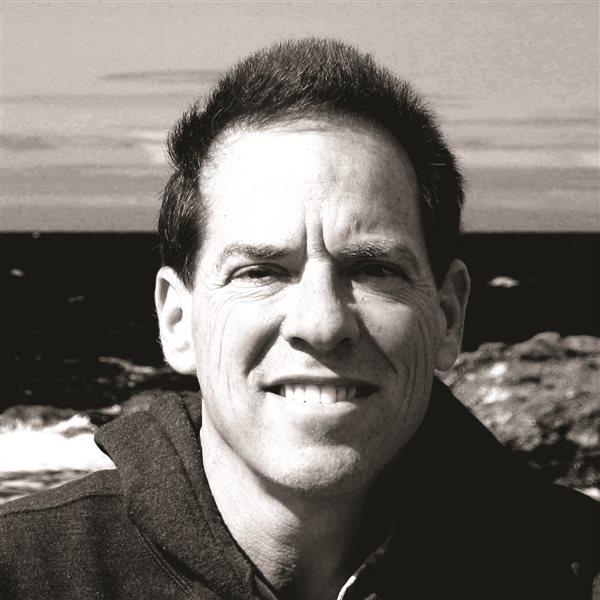Ignoring my father wasn't easy, as he'd been a pilot since before I was born. He bought his first airplane in 1949, a tiny Aeronca Chief. Soon afterward he traded it for an Ercoupe, which he landed in a Missouri farm field to wait out thunderstorms. Pilots don't do that sort of thing anymore.
"We're in trouble! I'm taking over!"
"Dad! Please believe me. We'll be OK...."
Next came a triple-tailed Bellanca Cruisair. "Most efficient airplane I ever owned," he claimed, "150 mph on 150 hp." He earned his instrument rating in that Bellanca, using just a headset, compass, and turn-and-bank indicator. In those days pilots flew airways defined by Morse code - A indicated one side of course and N the other. On-course aviators were treated to a steady tone. No frilly moving maps back then.
My dad's one metal-bender occurred in that Bellanca, which had retractable landing gear manually ex- tended by many turns of a crank. Approaching New Orleans on instruments, he was interrupted by radio calls and forgot to finish lowering the wheels. Fortunately, damage was slight, and his bird soon flew again.
"We're icing up!" shouted my father, jolting me back to the present.
"Dad," I replied. "We land in 20 minutes. Please relax!"
In the Air Force during the Korean conflict, my father tried the controls of early jets like the T-33 and B-47. But he was proudest of authorization to land his Bellanca on base in San Antonio, flying it home on leave to see my mom in Chicago. After leaving the service he moved up to Bonanzas - three in a row.
Then, in 1960, he bought the hottest personal airplane of its day, a twin-engine Cessna 310. We kids knew it was a big deal because Sky King flew one on his popular TV western. It was easy enough to imagine ourselves chasing those bad guys in our own airplane. Heck, Sky's Songbird was even painted similarly, though we couldn't be sure it was the same two-tone green on our black and white television.
It took more than TV adventures to satisfy my dad, however. With my mother, he frequently flew to Canada, Mexico, and the Caribbean. My mom, although afraid of water, even accompanied him to Bermuda, though she declined his biggest aviation adventure.
That occurred in 1962, when my father swapped the 310's back seat for a 140-gallon gas tank and flew with a buddy to Europe. They didn't take the northern route commonly flown by light airplanes, but instead navigated via Newfoundland and the Azores Islands to Portugal. The longest overwater leg exceeded 10 hours.
On the way home, they experienced engine roughness between Lisbon and the Azores. With instruments reading normal, the two pilots debated which engine was acting up, not wanting to kill the good one 250 miles from land. Eventually they shut down the left engine, which proved to be the correct decision. Relaying their position with the help of a nearby airliner, they proceeded to the Azores. It turned out that one cylinder had cracked all the way around and was within a half-inch of blowing off. I still have the photo of my dad kissing the good right engine after landing and the broken cylinder which he made into a lamp.
"We're going down!" yelled my father, again grabbing for the wheel.
"Harold!" said my mom from the back seat. "Leave him alone or you'll kill us all!"
We loved that green 310 bearing flag decals from so many countries, but slowly our family outgrew it. When my sister could no longer fit her cushion in the baggage compartment (field approved by the FAA, in those simpler times), my dad bought a newer six-place model. In it he flew my fianc�e and me across Lake Michigan, along with my mother and future in-laws, to celebrate our engagement at Win Schuler's famous restaurant in Marshall, Michigan.
It was a sad day when my father sold that final airplane. Struck down by degenerative disease, he slowly deteriorated, physically and mentally. But following in his footsteps as a flight instructor, I delivered him one last joyful flight at the controls. One afternoon when he was lucid, I offered the left seat of a Cessna to fly from Phoenix to Sedona. He did a credible job of taking off and getting us there, though I made the landing. It was a special flight for both of us, at least until he lost the ability to remember.
But by now, several years later, my Dad could no longer separate real events from imagined ones. While the rest of my family watched in horror, he continued grabbing for the controls, convinced that we were flying through the storm of a lifetime.
In reality, we were struggling for the steering wheel of a minivan, under clear skies on Interstate 10 between Tucson and Phoenix. After the most trying auto journey of my life, I pulled into our driveway and shut off the engine. With that, my Dad sighed with relief like a man snatched from death. Beaming respect, he shook my hand.
"Gregory," he said, "that was the best landing anyone's ever made."
I wasn't sure whether to laugh or cry. Like many fathers of his day, my dad was spare with praise. In his mind, I had just saved all our lives, and these were admiring words from a 40-year aviator. Suddenly, I knew what to do. I put my arms around him and hugged him. From one pilot to another, I knew I'd never receive a better compliment.
Greg Brown was the 2000 National Flight Instructor of the year. His books include The Savvy Flight Instructor, The Turbine Pilot's Flight Manual, and Job Hunting for Pilots. Comment on his articles online at ( www.GregBrownFlyingCarpet.com ).



